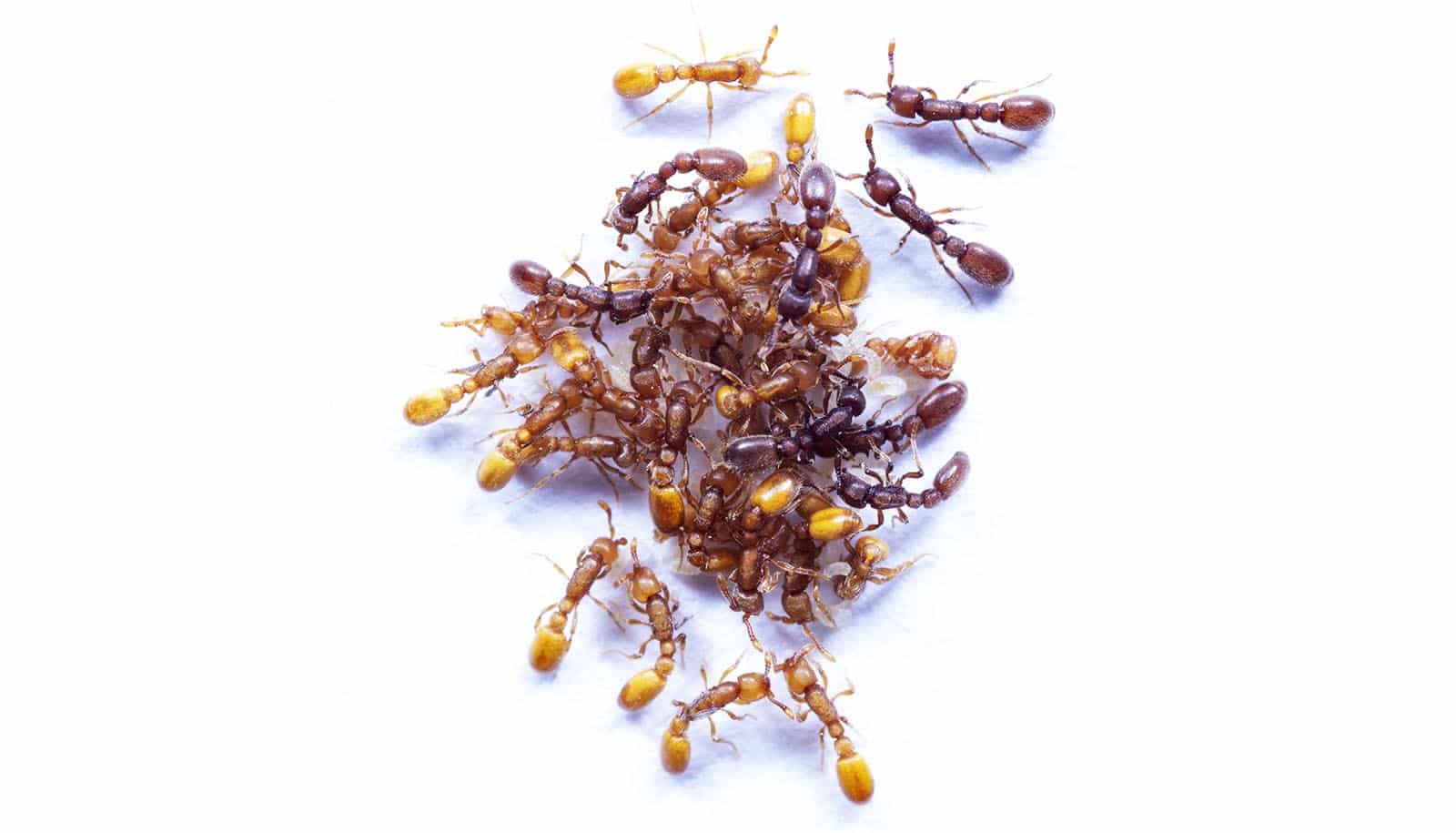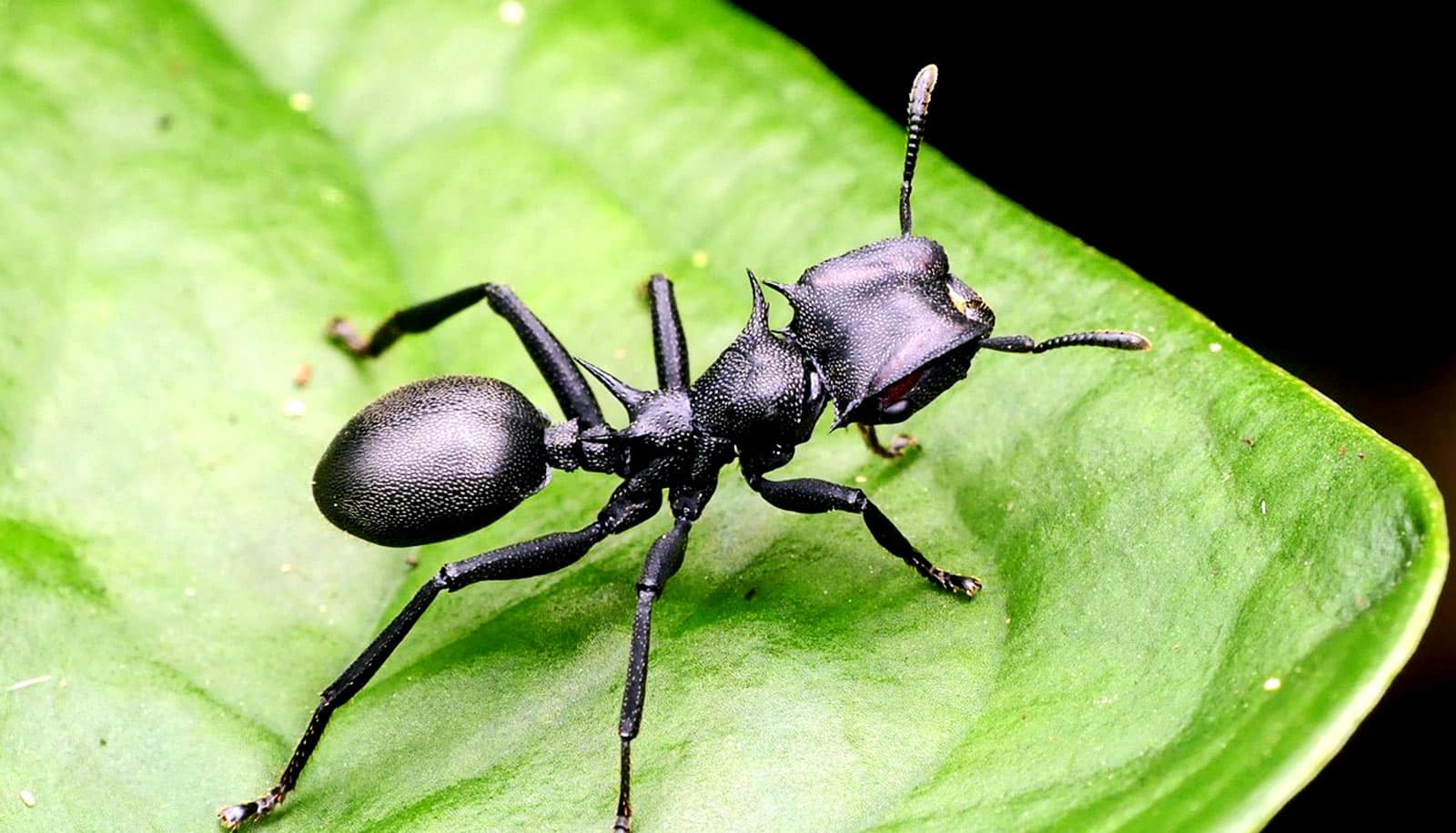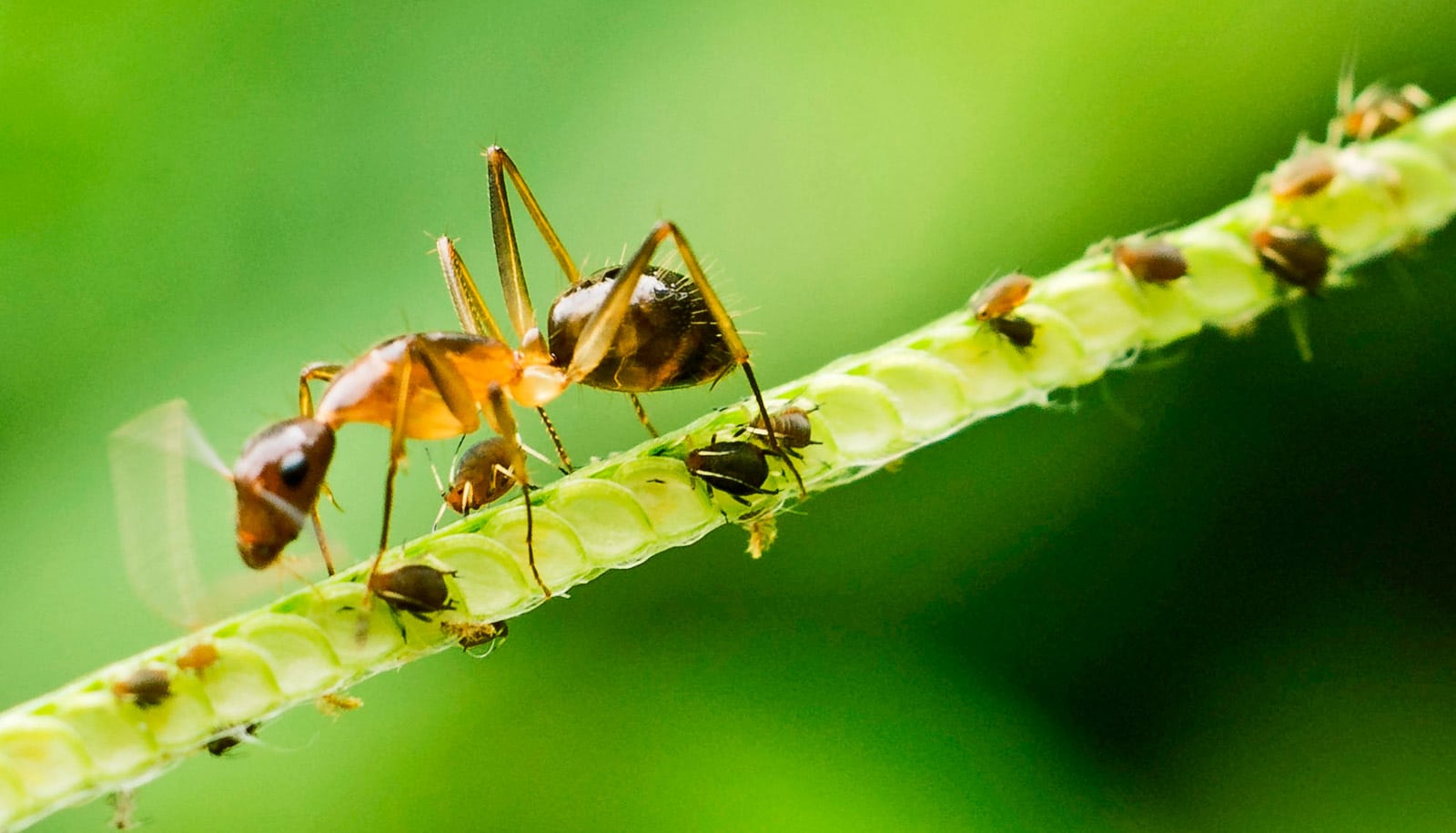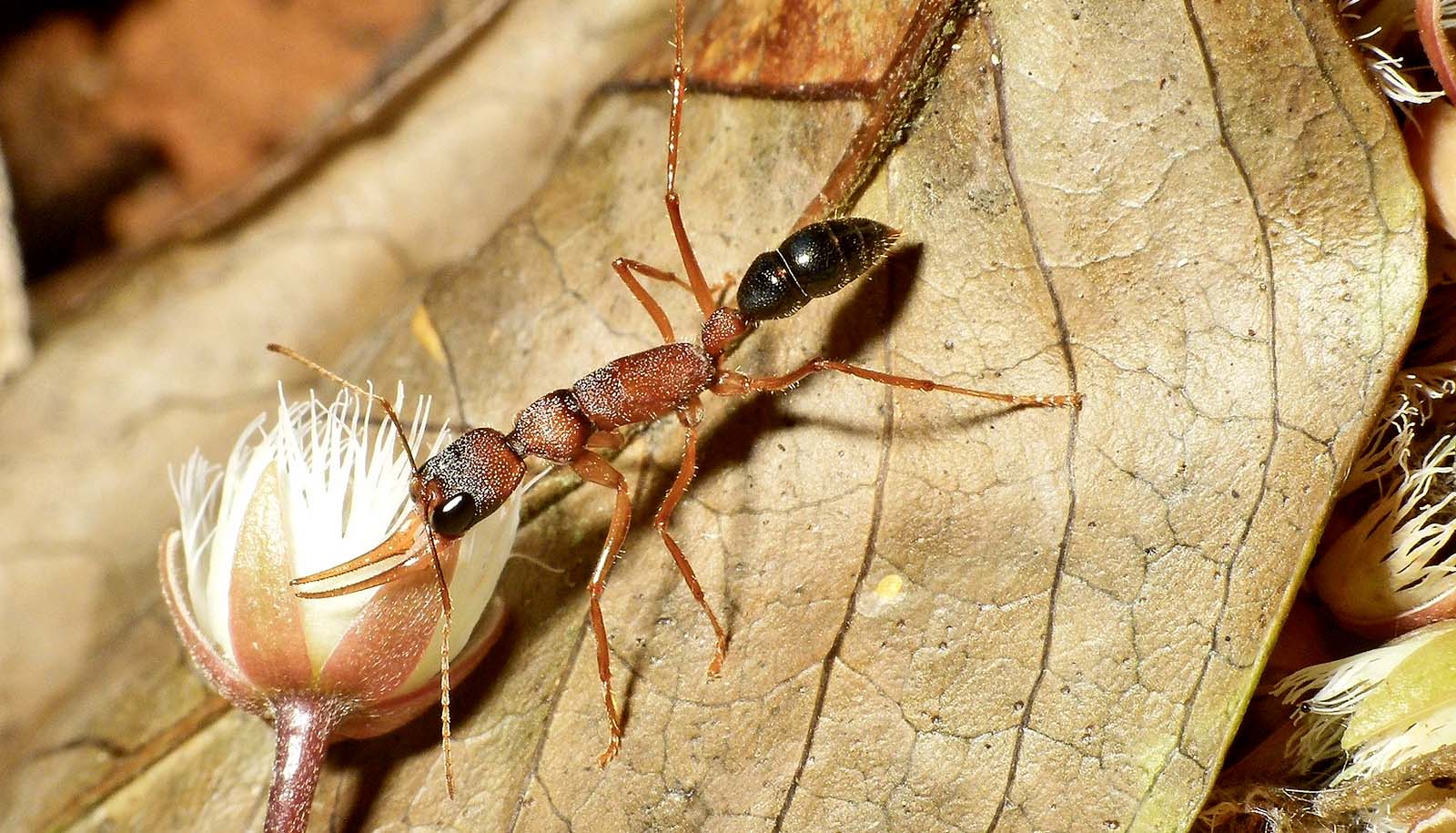A type of ants called workerless social parasites could help clarify the molecular mechanisms behind caste differentiation, or how an ant develops into a worker or a queen.
Delving into the genetics of these unique ants could also help illuminate the biological processes that drive the development of all animals.
Ants are known as hard workers, tirelessly attending to their assigned tasks—foraging for food, nurturing larvae, digging tunnels, tidying the nest. But workerless social parasite ants are total layabouts.
The rare species exist only as queens, and they die without workers to tend to them. To survive, parasitic ants infiltrate a colony of closely related ants, where, as long as they keep their numbers relatively low, they and their offspring become the leisure class of the colony.
It’s long been thought that these determinedly lazy insects likely evolved their queenly characteristics one by one, through a series of mutations, in an isolated setting.
Now scientists in the Laboratory of Social Evolution and Behavior at Rockefeller University, together with their collaborators at Harvard University, have a new theory.
As they report in Current Biology, they’ve discovered queen-like mutants—parasitic ants that spontaneously appeared in colonies of clonal raider ants, which are typically queenless.
“This mutant is like the precursor to other parasitic species,” says lead author Waring Trible. “It’s a new way of understanding how ants evolve to become socially parasitic.”
Ant parasite subterfuge
Among the more than 15,000 identified ant species are hundreds that qualify as social parasites. Born inside a host colony, a parasitic ant will leave the colony, use a sex pheromone to attract a male from another colony to mate with, and once pregnant, will infiltrate the original colony or find another nearby. She’ll often use subterfuge to sneak past colony guards.
The shampoo ant, for example, will snatch a few ants just outside a nest entrance, lick them to acquire the colony’s signature chemical scent, and then lick herself all over to transfer it to her own body. Chemically cloaked, she then can slip inside to live out her life and reproduce both new queens and males who mate outside the colony. The males die, and the queens begin the cycle again.
Because of their uniqueness, they’ve been studied extensively by biologists since Charles Darwin. Still there’s been a sticking point in a prevailing theory of their evolution, says Daniel Kronauer, associate professor at Rockefeller University, and head of the lab. They’re closely related to their hosts, but if they had to acquire these parasitic traits over time, they would need to be isolated during reproduction, otherwise interbreeding with their hosts would wash out their unique traits. But no one has found intermediately evolved ants—ones with some social parasite traits but not others—in the wild, says Kronauer.
When queen-like ants suddenly appeared among the clonal raider ants in Kronauer’s lab in 2015, Trible—who was looking to investigate genetic mechanisms behind caste differentiation—took notice.
Because clonal raider ants typically have no queens and reproduce asexually, the queen-like mutants stood out: they were born with wings, larger eyes, and ovaries, and as adults showed a general indifference towards labor.
But it turned out they were nothing new—they’d had been hiding for years in dense colonies whose numbers obscured their presence. Genetic analysis revealed that they had mutated into existence inside the colony in which they were first detected—a community of otherwise normal ants that Kronauer had collected in Okinawa, Japan, in 2008, and that still lived in the lab. It was a clue that the typical story of parasite ant invasion might need rethinking.
The researchers then ran a series of experiments and genetic analyses. One of the first experiments was to isolate them to see whether the phenotype was heritable. Because clonal raider ants reproduce asexually, they didn’t have to worry about interbreeding with other ants.
The queen-like mutants lay eggs that developed into copies of themselves. “We knew we had something cool,” Kronauer says.
They also tested behavior. Foraging parties composed entirely of queen-like mutants were half the size of those of worker ants, and they were far less likely to try to enlist other ants to track down food. These behaviors were a sort of intermediary between the diligence of worker ants and the dependence of queens, and allowed the mutant ants to avoid the dangers inherent to leaving the safety of the colony.
Despite laying twice as many eggs as their hosts, the ants self-regulate their head count. As long as their numbers stay below about 25 percent of the host population, they do well. More than that and they run into trouble. Queens need help from workers to free their wings as they emerge from the pupae, and if there are too many queens for the workers to look after, they’ll die entangled in their pupal skin.
“They seem to have the ability to regulate their own reproduction so that they don’t drive their host colony extinct, which is a very smart thing for a parasite to do,” says Trible, a former member of Kronauer’s lab who now runs his own lab at Harvard studying these and other mutants. “This provides these mutants the capacity to survive for long periods of time.”
Ant caste mystery
Whole-genome sequencing revealed that the parasitic queens have a mutation in chromosome 13, which is structurally similar to chromosomes that regulate colony social structure in other ants. This mutant chromosome seems to contain a “supergene,” a set of genes that work together to create a phenotype. In this case, the supergene contains more than 200 individual genes, a disproportionate number of which assist in the metabolism of hormones.
These include genes that code for cytochrome p450 enzymes, which are required to synthesize hormones in both ants and humans, and may play a role in the creation of these highly unusual mutants. (This enzyme family may be familiar to anyone who has been warned to not drink grapefruit juice while taking certain medications because the juice inhibits the enzymes from detoxifying the drugs.)
It appears that with this single mutation, “their form, the higher egg production, the behavior—it can all shift in a single mutational step,” Kronauer says.
And if that’s the case, Trible says, “it would be a way that it’s actually possible to go from a normal ant to a parasite within a single species.”
That idea—that two very different forms of an animal can arise in a single species—gets at the heart of the mystery of ant castes. Because workerless social parasites arise from a very specific type of mutation affecting ant caste development, studying the queen-like mutants has the potential to reveal insights into the still-unknown molecular mechanisms that allow ant larvae to develop distinct caste morphologies. “It provides a very comprehensive framework in which to study their evolution,” says Kronauer.
The findings could also lead to further research on an important process of development known as allometric scaling that happens in all animals, including humans, Trible says. Allometric scaling keeps the tissues of an organism proportional to its body size as it grows.
Its mechanisms are unknown, but understanding them likely has relevance to many aspects of human biology, including disease, says Trible. Perhaps queen-like mutants can provide a new avenue of investigation.
“We don’t have good examples of mutations in fruit flies or mice or human genetic disorders that break allometric scaling in such a dramatic way,” he says. “We think this queen-like mutant will be a powerful tool for understanding caste development, and caste development is in turn an ideal model to investigate these larger questions about how allometric scaling works.”
Source: Joshua Krisch for Rockefeller University



